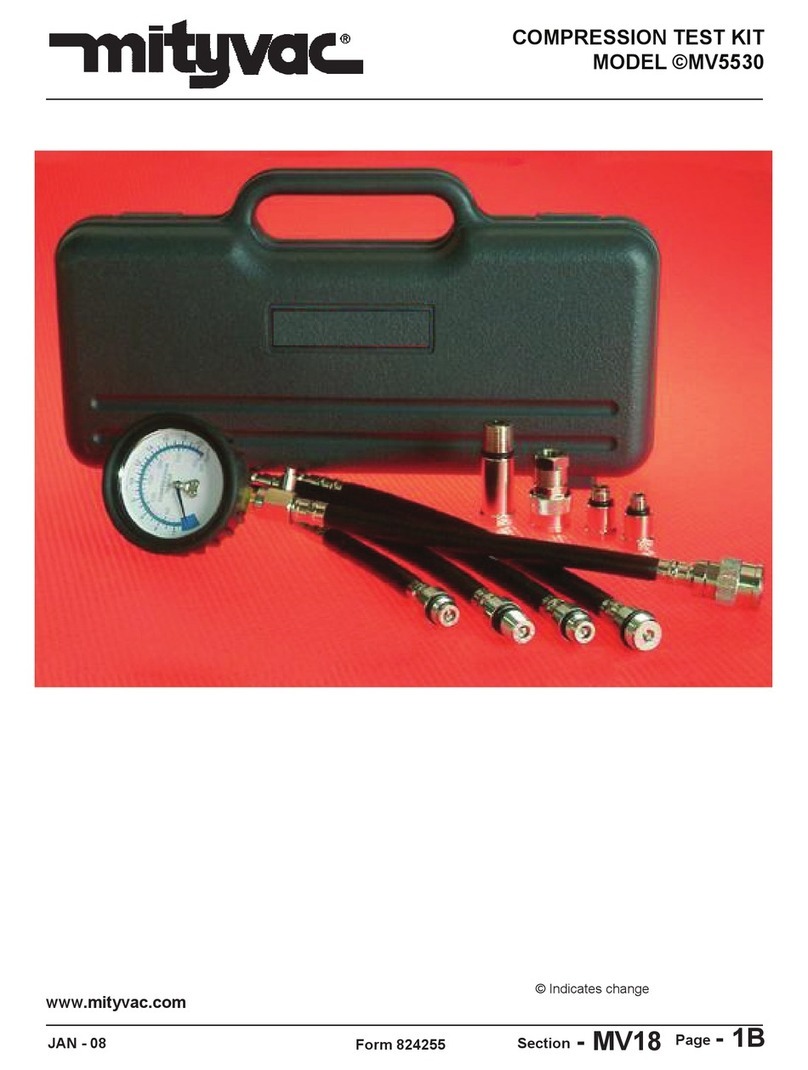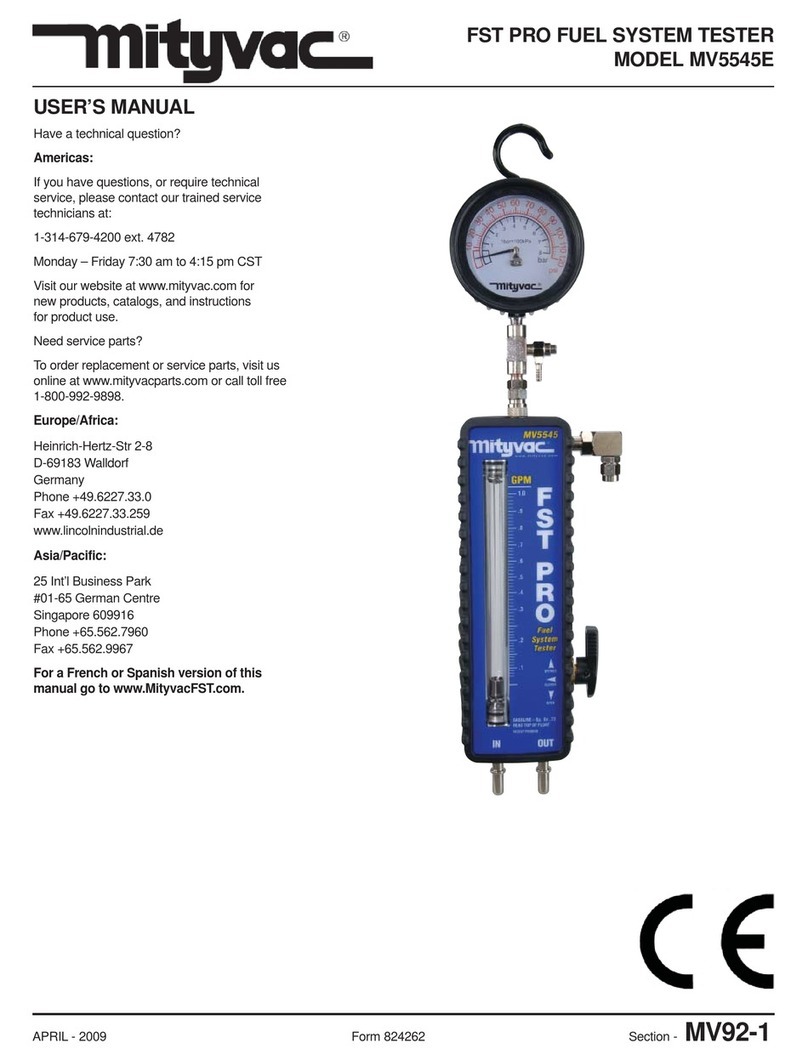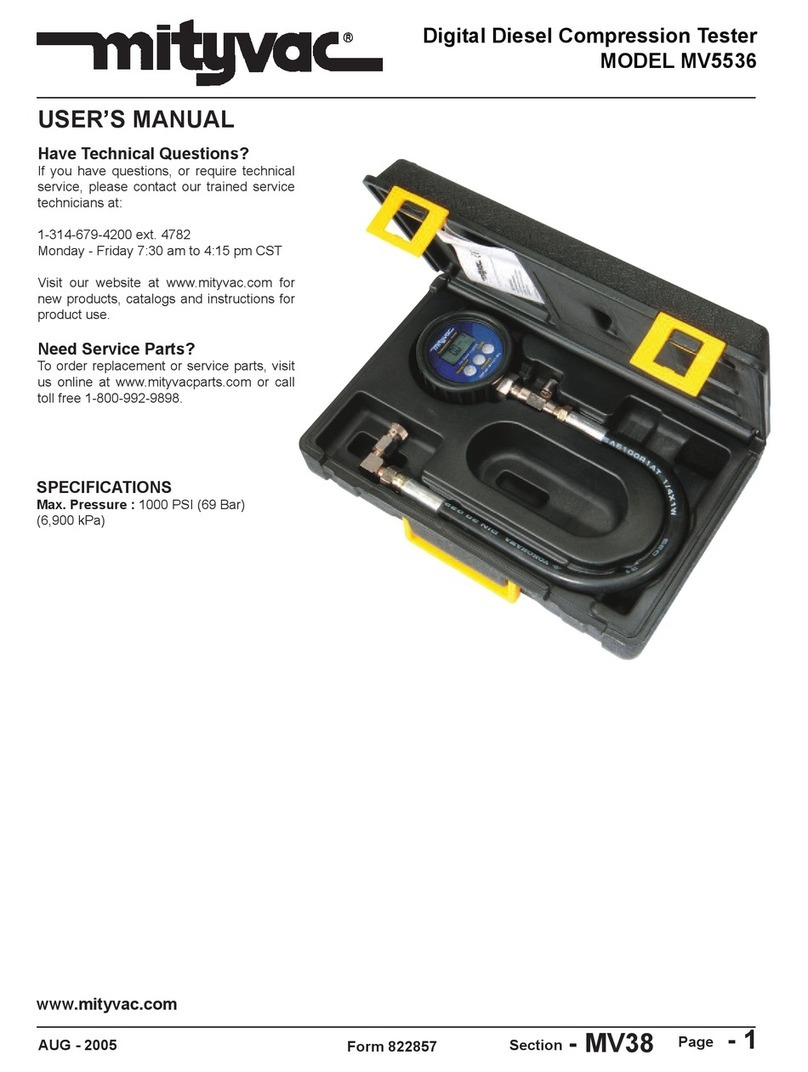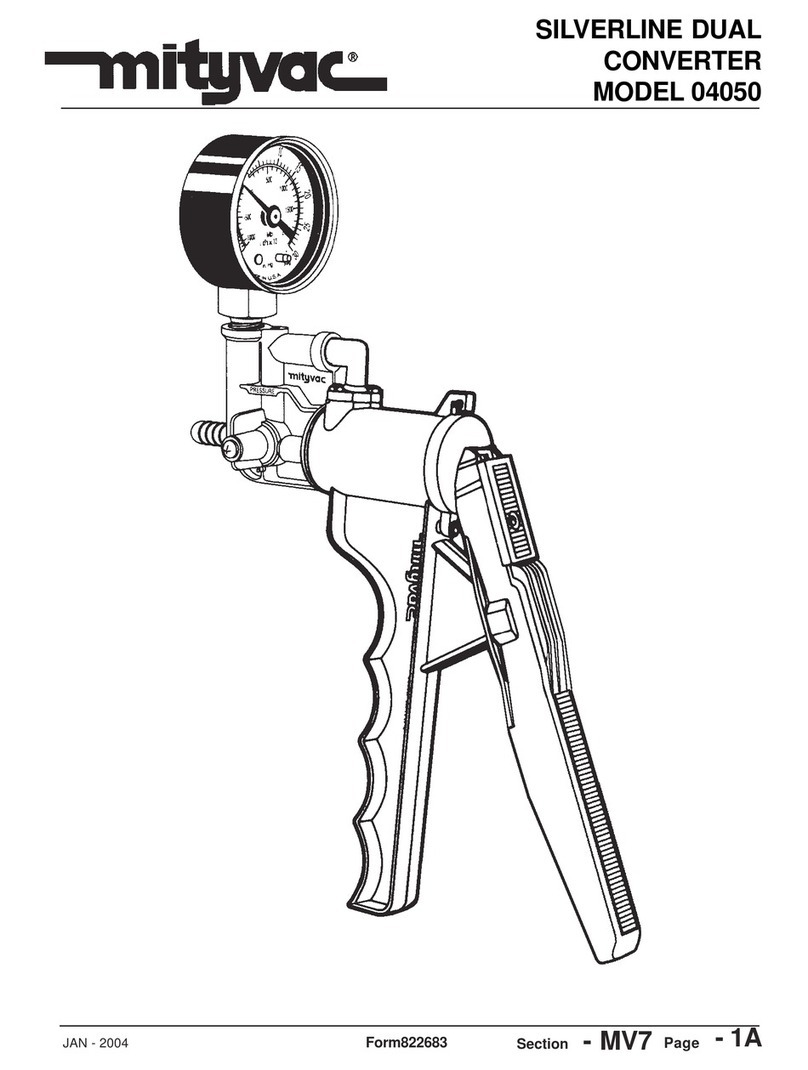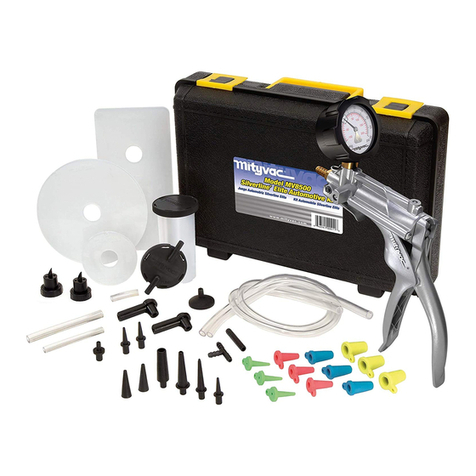
Page Number - 10
Fuel Pressure Test Kit
MODEL MV5546
Form 824129
Fuel System Pressure Testing
Fuel Systems
There are two basic types of electronic fuel injections: Throttle
Body Injection (TBI) and Multi-port or Multi-point injection
(MFI). The tests outlined in this manual are for testing fuel
system pressure on these types of systems. On most vehicles,
two basic tests are performed when checking fuel system
pressure:
“Key on, engine on” (engine running) test1.
“Key on, engine off” (engine not running) test Connecting2.
to the Fuel System
Connecting to Systems with Existing Test Ports
Be sure the vehicle transmission is in park or neutral, the1.
parking brake is engaged, and the engine is off.
Follow the vehicle manufacturer’s recommended proce-2.
dure to relieve the pressure from the vehicle fuel delivery
system.
Locate the test port on the engine’s fuel rail.3.
Attach the correct test port adapter. The 90° adapters can4.
be used if the test port is in a tight space.
Connect the test port adapter to the extended pressure5.
hose
Connect the extended pressure hose to the pressure6.
gauge
Before proceeding:7.
Doublechecktheconnections.•
Route and secure the clear pressure relief hose into•
an approved gasoline container
Route any hoses away from any rotating engine com-•
ponents, belts, fans, and hot exhaust components
Reconnect components such as PCV tubes, wiring•
harnesses, vacuum tubes, etc., that were discon-
nected to gain access to the test port.
8. Re-enable the fuel pump (if previously disabled), and
cycle the ignition switch to the ON position for a brief time,
andthenbackOFF.Donotstarttheengine.
On most vehicles, cycling the ignition ON and OFF will
allowthefuelpumptorunbriey,andprimethesystem.
After cycling the ignition, check all fuel connections for
leaks.Ifallttingconnectionsaresecure,theinstallation
is complete and the fuel pressure tester is ready to be
used for diagnostic tests.
Connecting to System with Fuel System Adapters
Be sure the vehicle transmission is in park or neutral, the1.
parking brake is engaged, and the engine is off.
Follow the vehicle manufacturer’s recommended proce-2.
dure to relieve the pressure from the vehicle fuel delivery
system.
Locate the fuel supply line to the engine’s fuel rail, and3.
select the best location to disconnect the supply line and
install the inline pressure test assembly.
For additional assistance, consult the vehicle manufac-
turer’s service information.
If the engine has a cover, it will most likely have to be
removed to gain appropriate access.
Remove or disconnect any obstacles required to gain ac-4.
cess to the connection, and place shop towels under and
around the connection to absorb fuel from the disconnect-
ed line. To minimize fuel spillage and reduce the amount
of time the fuel line is disconnected, try to identify the type
of connection before disconnecting the fuel line, and have
the required fuel connection adapter(s) readily available.
Follow the vehicle manufacturer’s service information for5.
the proper method to disconnect the fuel line. Special
wrenches or disconnect tools may be required.
WARNING: Avoid spilling fuel on hot engine parts. Clean-
up any fuel spills immediately after they occur.
Install the appropriate adapter into the fuel supply line6.
extending from the tank.
Connect the inline pressure test assembly to the inlet and7.
outlet fuel line adapters
Connect the extended pressure hose to the tee in inline8.
pressure test assembly.

